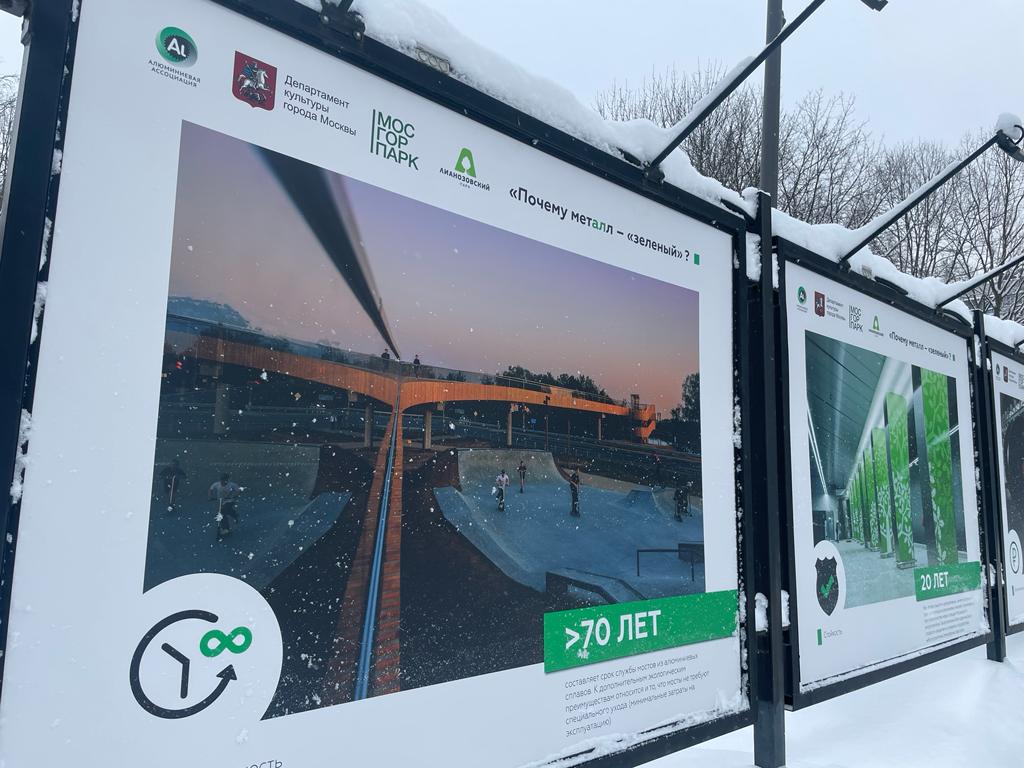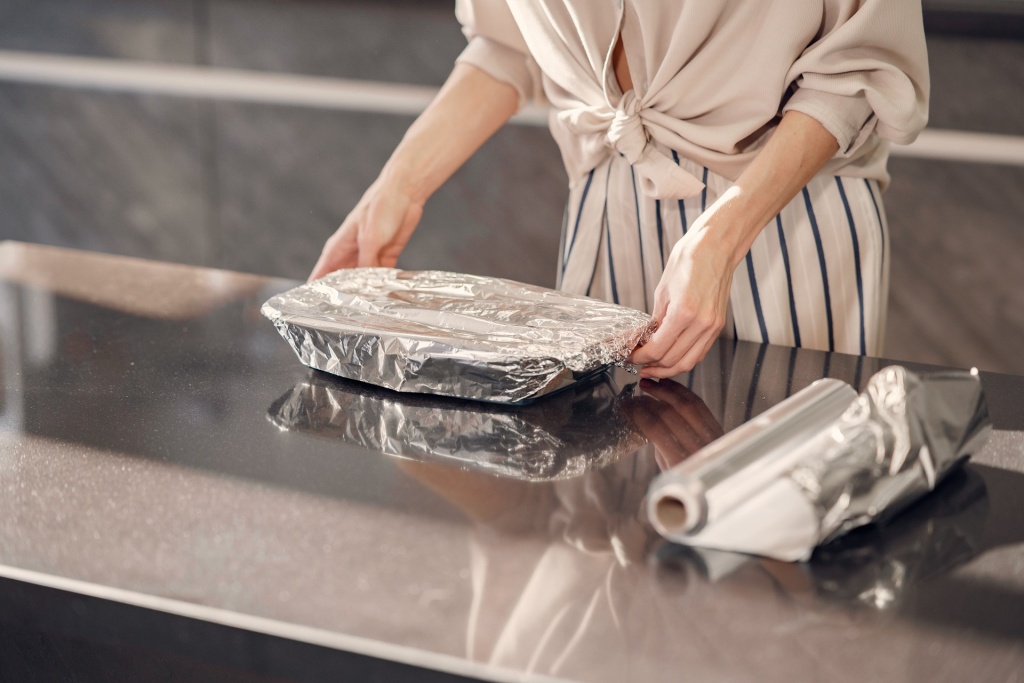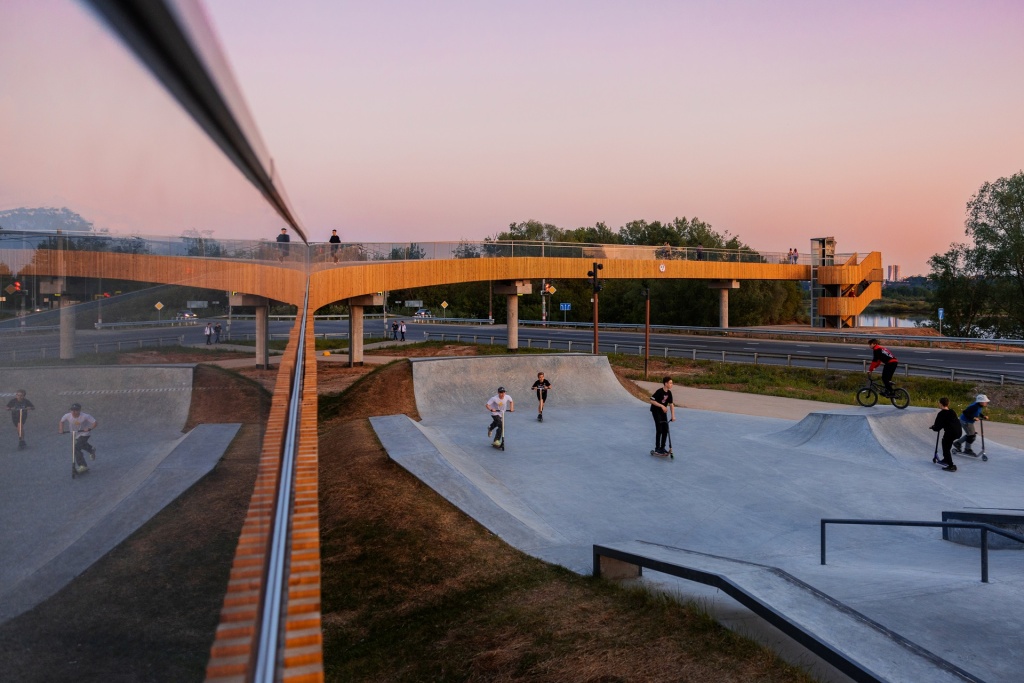06.12.2023 – Aluminium Association
 The Why is Metal Green? photo exhibition has been opened in Lianozovsky Park in Moscow. The exhibition will run until the end of December, after which it will continue at the Angara Ponds Park in January and the Bibirevo Ethno Village in February. The visitors will learn about the unique properties of aluminium and understand why this metal is considered one of the most eco-friendly materials on Earth. Today, aluminium is not just at the forefront of the environmental agenda in Russia and globally, but it’s also an indispensable material in construction, automotive and shipbuilding, power generation, consumer products, and other sectors.
The Why is Metal Green? photo exhibition has been opened in Lianozovsky Park in Moscow. The exhibition will run until the end of December, after which it will continue at the Angara Ponds Park in January and the Bibirevo Ethno Village in February. The visitors will learn about the unique properties of aluminium and understand why this metal is considered one of the most eco-friendly materials on Earth. Today, aluminium is not just at the forefront of the environmental agenda in Russia and globally, but it’s also an indispensable material in construction, automotive and shipbuilding, power generation, consumer products, and other sectors.
MADE IN RUSSIA
Russia is not only one of the leading global manufacturers of aluminium, but it is also home to some of the most eco-friendly production facilities. The ALLOW INERTA alloy, produced by RUSAL using inert anode technology reduces both direct and indirect greenhouse emissions to 0.01 tonnes of CO2 per tonne of aluminium. This technology is a result of the efforts of a member of the Aluminium Association to achieve carbon neutrality and the company’s ambition to promote the use of materials that have the least environmental impact.
At the end of 2023, 20 tonnes of the ALLOW INERTA alloy were first supplied for the production of food foil, which will further enhance its environmental properties. Aluminium foil is an essential wrapping material in your kitchen. It protects food from light, liquids, and bacterial contamination. Foods wrapped in foil stay fresh for longer, a quality that is highly valued in professional settings such as bars and restaurants.

Aluminium foil is a vital kitchen wrapping material that blocks light, liquids, and bacteria
Aluminium is becoming increasingly popular in beverage packaging. Aluminium can not only protect the beverage and is convenient for transportation, but also has one of the shortest life cycles among all beverage containers. A can only take 60 days from the point of sale to its next appearance on the shelf. Over this time, it is bought, used, recycled, and reused.
NEW ROUTE
 Today, there are numerous aluminium components in vehicles. This light and strong metal enables new speed records, reduces track wear and increases load capacity. Advanced bullet trains like the Sapsan, Ivolga, and Lastochka have welded aluminium bodies. They reach 160 km/h and carry passengers from Moscow to Nizhny Novgorod in just 4 hours.
Today, there are numerous aluminium components in vehicles. This light and strong metal enables new speed records, reduces track wear and increases load capacity. Advanced bullet trains like the Sapsan, Ivolga, and Lastochka have welded aluminium bodies. They reach 160 km/h and carry passengers from Moscow to Nizhny Novgorod in just 4 hours.
Reducing the railcar weight means it can carry more payload. This is especially important for manufacturers of bulk products like fertilisers. In 2022, RM Rail of Saransk launched a new generation of aluminium hopper wagons with an increased capacity of 79 tonnes, a body volume of up to 111 m3 and a reduced tare weight of 21 tonnes. Compared to steel railcars, aluminium ones save up to 10% of the total weight per one tonne of bulk cargo (3...8 tonnes).
Aluminium is essential in the automotive industry, both in ICE and e-vehicles. Experts estimate that using 1 kg of aluminium in a vehicle can save up to 10 litres of petrol for every 2,000 km. The lower weight of an electric vehicle extends its range, which is a key factor in electric transport, especially for intercity travel. The eco-friendliness of the metal continues even after the vehicle is decommissioned: about 90% of the metal can be recycled and reused when the vehicle is scrapped. Interestingly, producing secondary (recycled) aluminium uses only about 5% of the energy required for primary aluminium production.
SCIENTIFIC METHOD
The Institute of Light Materials and Technologies has developed the aluminium-scandium alloy 1581, which is now being tested in shipbuilding. The alloy contains up to 0.03% of scandium, which enhances the mechanical properties without compromising the corrosion resistance. Tests conducted by BRO, a boat and catamaran manufacturer from Rostov-on-Don, showed a 30% increase in the hull strength, allowing for the use of thinner aluminium sheets and a significant reduction in the vessel weight. For boat owners, this means reducing fuel costs or installing a more powerful engine.
Innovative aluminium technologies are also making their way into another industrial sector: bridge construction. Until 2017, Russia had only one bridge made of aluminium alloys, the Kolomensky Bridge in St. Petersburg, built back in the 1960s. With a significant contribution of the Aluminium Association, over 18 footbridges have been built in many regions, including Moscow, Nizhny Novgorod, Tula, Ryazan and Samara, and the Krasnoyarsk Territory. One of the reasons for their popularity is the eco-friendly nature of these structures. They have a lifespan of over 70 years, require minimal maintenance, and at the end of the life cycle, the aluminium structures can be recycled, offsetting some of the construction costs. Currently, 63 bridges are under construction, including international footbridge projects welcomed due to their unique sustainability.

The bridge in the Nizhny Novgorod region is Russia’s first footbridge made from aluminium alloys and features an observation deck
A distinctive feature of aluminium bridges is rapid assembly. Off-the-shelf bridges (standard quick-assembly bridges made from aluminium alloys) can be installed in just one day. Pre-fabricated parts are shipped from the factory to the site, and the bridge is assembled like a kit, without any machining.
METAL IS NOT AFFECTED BY THE ELEMENTS
Aluminium can be used in all climatic conditions without losing its properties. Aluminium structures are less likely to be damaged in fires, and the metal even becomes stronger at low temperatures. It can be used in temperature ranges from -80C to +300C.
Aluminium glazing is also used in construction. Today, residential buildings may have floor-to-ceiling windows. Aluminium glazing can increase natural light intensity in a room by 15%. This is achieved by installing window systems with narrow aluminium extruded profiles. Furthermore, these systems are "warm", maintaining a comfortable temperature in the room even in winter, regardless of the area of glazing.
In high-rise construction, the light weight of aluminium significantly reduces the cost of building construction due to a shallower foundation and fewer resources used. Today, aluminium is becoming the primary material in the construction of residential and commercial buildings, and in renovation. For instance, translucent domes made of aluminium alloys from Bearing Systems (Novosibirsk) are installed on iconic buildings in both capitals: the Moscow Polytechnic Museum on Lubyanka and the Rimsky-Korsakov Conservatory in St. Petersburg. Aluminium structures not only protect the interior of buildings from the elements but also increase the usable space of historical buildings.
Using advanced aluminium alloys 8176 and 8030 in the cabling of residential buildings can result in project cost savings of up to 45%. According to Pavel Moryakov, Head of the Energy Sector, Aluminium Association, and CEO of Moskabelmet Group, advantages such as cost (up to 60% cheaper than equivalents), no counterfeiting and lighter weight make it feasible to use aluminium cables in the most ambitious construction projects, such as housing renovation. Indeed, by switching to aluminium alloy cables the developer can save up to RUB 6 million for a 27-storey building, which is equivalent to the cost of two one-bedroom apartments.
Using advanced aluminium alloys 8176 and 8030 in the cabling of residential buildings can result in project cost savings of up to 45%.
“Industry is facing stringent requirements for the materials used, ranging from safety and performance to environmental and aesthetic considerations. Aluminium fully meets these requirements and is rightly considered a green material", notes Irina Kazovskaya, the Chairperson of the Aluminium Association.

